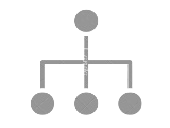
Architecture-Oriented Approach focuses on the following factors:
1. Overall structure design: Clearly define the overall system structure and framework at the initial stage to ensure overall consistency and integrity.
2. Modularity and abstraction: Divide the system into modules and components, and clarify the roles and responsibilities of each. This makes it easier to modify and extend.
3. Leverage design patterns: Leverage existing design patterns and best practices for reusable and maintainable designs.
4. Consideration of Non-Functional Requirements: NFR (Non-functional requirements) such as performance, scalability, security, and reliability are considered from the initial stage to ensure the quality of the entire system.
5. Choose Tech-stack: Carefully select the technologies, tools, and frameworks you want to use and choose the one that best fits your project needs.
